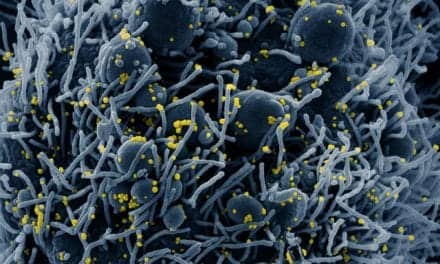More than one-third of patients in a cohort of 214 COVID-19 infections exhibited neurologic manifestations, which were more prevalent in patients with severe disease, according to data published in JAMA Neurology.
Researchers in China and the US conducted what they say is the first examination of neurologic symptoms in COVID-19 patients, via a retrospective analysis coronavirus admissions to three medical centers in Wuhan, China.
Overall, researchers found that 88 patients (41.1%) had severe COVID-19 infection compared to 126 patients (58.9%) with non-severe infection. Of these patients, 78 (36.4%) had one or more neurologic symptoms. [1]
Using patient EMR data, researchers logged neurologic manifestations and categorized them into three categories: [1]
- 53 (24.8%) had central nervous system (CNS) manifestations:
- dizziness (16.8%)
- headache (13.1%)
- impaired consciousness (7.5%)
- acute cerebrovascular disease (2.8%)
- ataxia (0.5%)
- seizure (0.5%)
- 19 (8.9%) had peripheral nervous system (PNS) manifestations
- taste impairment (5.6%)
- smell impairment (5.1%)
- vision impairment (1.4%)
- nerve pain (2.3%)
- 23 (10.7%) had skeletal muscular injury manifestations.
According to their analysis, nervous system symptoms occurred more frequently in severe COVID-19 infection 40 of 88 patients (45.5%) compared to non-severe patients 38 of 126 (30.2%) and most symptoms presented in 1-2 days of illness. [1]
While fever, cough, anorexia, and diarrhea remain common symptoms of COVID-19, researchers noted that some patients in the study presented with only neurologic manifestation when seeking hospital care, which they say warrants close attention to all COVID-19 patients neurologic conditions, because “rapid clinical deterioration or worsening could be associated with a neurologic event such as stroke, which would contribute to its high mortality rate.”
“We need to pay close attention to their neurologic manifestations, especially for those with severe infections, which may have contributed to their death. Moreover, during the epidemic period of COVID-19, when seeing patients with these neurologic manifestations, physicians should consider SARS-CoV-2 infection as a differential diagnosis to avoid delayed diagnosis or misdiagnosis and prevention of transmission,” they concluded. [1]
Researchers noted several limitations, including possible underreporting of mild neurologic symptoms such as loss of taste or smell; they were also unable to track the impact of these neurologic conditions on patient outcomes. [1]
Source: Mao L, et al. Neurologic Manifestations of Hospitalized Patients With Coronavirus Disease 2019 in Wuhan, China. JAMA Neurol. Published online 2020 Apr 10. Accessed at doi:10.1001/jamaneurol.2020.1127










